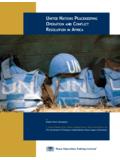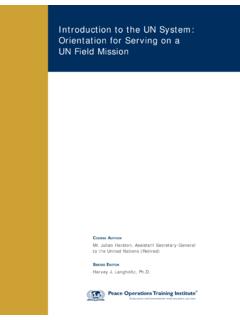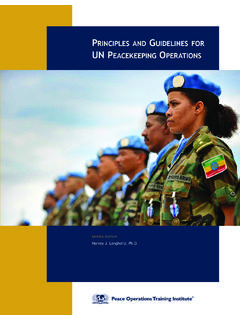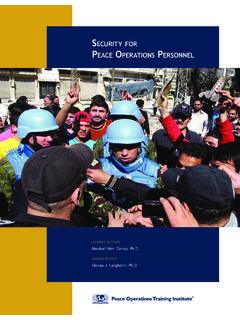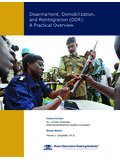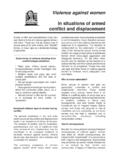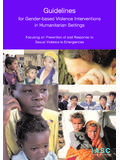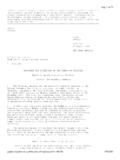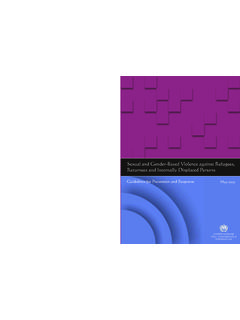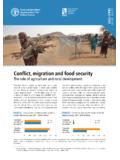Transcription of Ethics in Peacekeeping - Peace Operations Training …
1 Ethics in Peacekeeping TABLE OF CONTENTS FOREWORD ..VI INTRODUCTION TO THE COURSE.. VII FORMAT OF STUDY .. IX METHOD OF STUDY.. X LESSON 1 CODE OF CONDUCT ..1 Guiding principles for the UN peacekeeper s Code of Conduct The Blue Helmet s Code of Conduct Consequences of Violations of the Code of Conduct LESSON 2 CULTURAL AWARENESS .. 13 Concept of Culture and its Importance Dangers Culture in Peace Operations Understanding Cultural Differences Building Cultural Awareness LESSON 3 GENDER AND Peacekeeping .. 25 Gender versus Sex Gender Roles Gender Discrimination Gender and Human Rights The Impact of Conflict on Women Protecting Gender Rights and Sexual Relations in PKOs LESSON 4 SEXUAL EXPLOITATION AND ABUSE (SEA) AND HUMAN TRAFFICKING IN A Peacekeeping CONTEXT.
2 35 Sexual Exploitation and Abuse (SEA) Human Trafficking The Impact of SEA on Peacekeeping Missions UN Standards DPKO Response to Sexual Exploitation and Abuse Responsibilities of Peacekeepers iii LESSON 5 CHILD PROTECTION.. 45 Understanding Child Protection The Rights of the Child CRC Guiding Principles The Consequences of Conflict on Children The Impact of Conflict on Children The UN and Child Protection in Peace Operations What Can Peacekeepers Do? LESSON 6 HUMAN RIGHTS FOR PEACEKEEPERS ..55 What are Human Rights? The Legal Basis for Human Rights Human Rights and Host Countries International Humanitarian Law (IHL) Examples of Human Rights Violations Applying Human Rights in a Peacekeeping Environment LESSON 7 HIV/AIDS AWARENESS AND UN POLICIES GUIDELINES .. 77 Basic Facts about HIV/AIDS Exposure Risks of Contracting HIV Protection Against HIV Professional Behaviour LESSON 8 UN GUIDELINES AND PROCEDURES ON DISCIPLINE FOR UNIFORMED PEACEKEEPERS.
3 93 Off-Duty Misconduct Consequences of Violations of the Code of Conduct Protecting Human Rights and Gender Legal Status of Peacekeepers and Jurisdiction for Violations Command Responsibility for Human Rights Discipline Loyalty towards Comrades-in-Arms Uniformed Peacekeepers' Duty to Act Essential Principles on Human Rights Conduct Courses of Action iv APPENDIX A: TABLE OF ACRONYMS ..113 APPENDIX B: WE ARE UNITED NATIONS PEACEKEEPERS..115 APPENDIX C: SG S BULLETIN ON SEXUAL EXPLOITATION AND ABUSE .. 117 APPENDIX D: SECURITY COUNCIL RESOLUTION 1539 (2004) .. 121 APPENDIX E: THE UNIVERSAL DECLARATION OF HUMAN RIGHTS .. 126 END-OF-COURSE EXAMINATION INSTRUCTIONS..132 v FOREWORDThis course on the Ethics in Peacekeeping is the result of compiling existing UN manuals and courses that have addressed topics related to Ethics .
4 The author has attempted to provide an overview and some perspectives concerning the major aspects of modern-day Peacekeeping , from an ethical perspective. This course is not intended to be an academic work or, even less so, a scientific one. Rather, it presents a general introduction to the basic ethical aspects of Peacekeeping . This text was written for a general audience. It adopts an approach to the material that seeks to be both universally applicable and free of any political agenda. It makes no claim to providing a comprehensive coverage of all subject areas that make up the field of humanitarian assistance, but instead refers the student to other references, organisations, and web sites. In addition, this course should not be considered a technical reference work; it does not attempt to replace the excellent documents that have been produced over the last 15 years by the various actors of the United Nations system and international non-government organisations.
5 The intent of this course is to provide a basic overview and create an understanding of the Ethics in Peacekeeping . Through the use of the case studies and practical examples, this compilation aims to be a guideline for peacekeepers in the field. It is our hope that the readers will share their thoughts and discuss with each other the issues raised in this course. Special thanks go out to Lt. Col. Enrique Oribe, who has been a great help and expert with the process of compiling this work. Anne Elias, MSc 2005 vi INTRODUCTIONThe Nature of Today s Conflicts The post-Cold War era has witnessed a new pattern of armed conflicts. While conflicts continue to occur in many parts of the world and have increased in the last decade, they have mainly been of an internal nature, involving states and non-state actors, which include irregular forces, private militia, and guerrillas.
6 They have often been rooted in ethnic tensions, fights for the control of natural resources, the people s struggle to achieve freedom from oppression, social justice, and a democratic government. In several situations, conflicts have resulted in the phenomenon of failed states, where the government structure, authority, legal, and political systems have collapsed, rendering the protection of human rights more difficult. These conflicts are accompanied by massive humanitarian crises, and human rights are violated on a large scale. Civilians are deliberate targets of violence . Mass population displacement, the use of child soldiers, violence against ethnic and religious groups, gender-based and sexual violence , deliberate destruction of property and crops, and mutilations are some of the human rights violations that accompany contemporary conflicts.
7 Thus, human rights violations are, at the same time, the cause and consequence of conflicts. The Peacekeeper and the Mission Area Peacekeepers are powerful because they have money, mobility, force, and access to food, water, and other goods. This causes a power imbalance between the peacekeepers and the host population. Wearing a uniform brings with it personal responsibility. Those wearing the uniform have a responsibility to the service for which they work to keep the Peace in a dignified and civilized manner. They also have a responsibility to the public. The primary responsibilities of uniformed personnel are to uphold the law, respect human rights, and set an example to society. Uniformed personnel are easily identified by the public because of the uniform they wear. The uniform represents power and force; the person wearing it is usually respected and often feared.
8 A person wearing a uniform usually also has more resources than the local population, especially in conflict zones. Because of the power and influence that goes along with wearing a uniform, the potential for abuse is present. This abuse can result in disrespect and even disgust for the person who is abusive. It also, by extension, brings disrespect to the service as a whole. Men who abuse alcohol and indulge in sex for money while wearing a uniform can also set a poor example to the public and other men in the service. vii Most peacekeepers use this power to do good. The international presence can have a positive effect by initiating and supporting efforts to stop organised crime and improve the conditions of the local population, including groups that are particularly vulnerable to the effects of human rights violations.
9 These vulnerable groups include women, children, minorities, refugees, internally displaced persons, and the elderly. Unable to effectively withstand the pressures of conflict, they are easy prey for humiliation and physical abuse. Some peacekeepers have, however, used the powerful situation they are in to abuse vulnerable populations. They do this by using prostitutes, thus encouraging prostitution, often including children; by spreading HIV/AIDS in the process; by getting involved in or even unknowingly encouraging organised crime involving prostitution and the trafficking of women; by abandoning children they have fathered; and by abandoning women who have been promised marriage or other benefits in exchange for a sexual relationship. This compounds the difficulties these communities face. Such behaviour is illegal and morally unacceptable and will not be tolerated by the United Nations.
10 The UN Core Values integrity, professionalism, and respect for diversity form the basis for this course, Ethics in Peacekeeping . They are important principles and should not be underestimated. Violations of UN values will result in a negative impact on the credibility of the UN. viii FORMAT OF STUDY This course is designed for independent study at a pace determined by the student Course format and materials permit: MODULAR STUDY EASE OF REVIEW INCREMENTAL LEARNING STUDENT S RESPONSIBILITY The student is responsible for: Learning course material Completing the End-of-Course Examination Submitting the End-of-Course Examination Please consult your enrolment confirmation email or the end of this course for examination submission instructions. ix METHOD OF STUDY The following are suggestions for how to proceed with this course.

